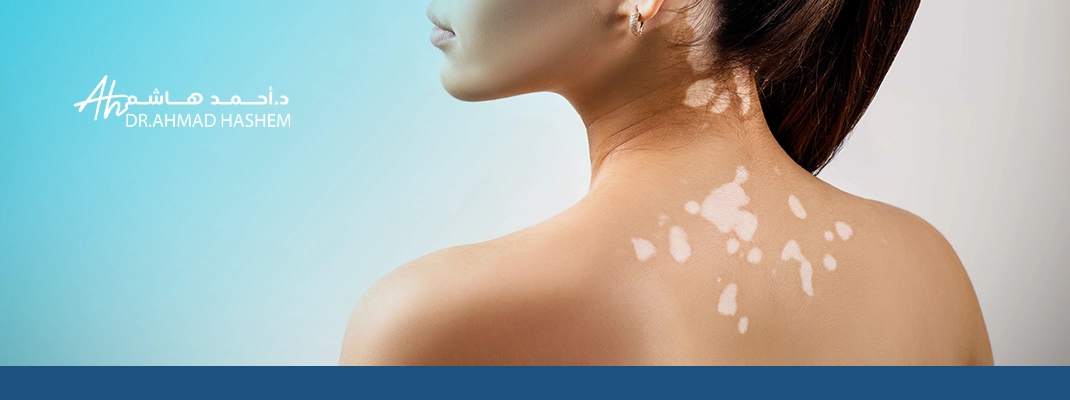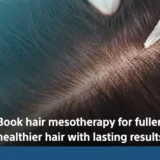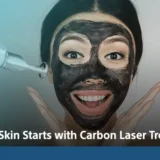In a time when skin problems are becoming increasingly common among both adults and children, many people wonder: What is the difference between white spots and vitiligo with pictures? Does every white spot mean the beginning of vitiligo? Can these spots disappear on their own? And is vitiligo contagious? These are frequent questions that concern patients and their families, as it is often difficult to distinguish between different skin conditions—especially when white patches appear on the face or body without obvious symptoms.
In this article, we will cover everything you need to know about the difference between white spots and vitiligo with pictures, how to identify them correctly, the causes of white patches, the immune and genetic factors behind vitiligo, whether white spots can actually turn into vitiligo, the latest treatment methods, when to visit a dermatologist, and essential medical tips to prevent skin pigmentation disorders.
What Are White Spots on the Skin?
White spots on the skin are localized changes in skin color caused by a reduction or absence of melanin—the pigment responsible for natural skin color. They can appear anywhere on the body, vary in size and shape, and may be temporary or permanent depending on the underlying cause. Possible causes include:
Fungal infections (Tinea Versicolor)
One of the most common reasons, caused by superficial fungi known as Malassezia. The spots usually appear on the back, neck, and chest. They may be lighter in color and become more noticeable after sun exposure.Pityriasis Alba
A common skin condition in children and teenagers, appearing as pale patches with mild scaling, especially on the face.Prolonged Sun Exposure
Excessive sun exposure can damage pigment-producing cells, leading to light spots (hypopigmentation), particularly in darker skin tones.Chronic Skin Diseases
Conditions such as eczema or psoriasis may leave white spots after inflammation due to secondary loss of melanin.
When Are White Spots a Cause for Concern?
Although most white spots are harmless, persistence or spread over time—especially when symmetrical on both sides of the body—may indicate a more complex condition such as vitiligo. For accurate diagnosis, it is always recommended to consult a dermatologist such as Dr. Ahmed Hashem, who may perform a Wood’s Lamp examination or a skin biopsy if needed.
What Is Vitiligo?
Vitiligo is a chronic, non-contagious skin condition classified as an autoimmune disorder. In vitiligo, the immune system mistakenly attacks melanocytes—the pigment-producing cells in the skin, hair, and eyes. As a result, melanin production stops in certain areas, leading to white patches that are most noticeable in darker skin tones.
How Does Vitiligo Appear?
Vitiligo usually begins with small white patches that may remain localized or spread gradually to other parts of the body. Common areas include:
Face (around the mouth or eyes)
Hands and feet
Joints
Scalp (sometimes with premature greying of hair)
Genital areas
In some cases, vitiligo can also appear on the lips, inside the mouth, or even in the eyes.
Types of Vitiligo
Localized Vitiligo: Appears in one or a few areas.
Segmental Vitiligo: Affects one side of the body, more common in children.
Generalized Vitiligo: Symmetrically affects multiple areas of the body.
Universal Vitiligo: Rare, where the patient loses almost all skin color.
Is Vitiligo Contagious or Dangerous?
No. Vitiligo is not contagious and cannot be transmitted by touch. However, its psychological impact can be significant, especially when affecting visible areas such as the face and hands. Early diagnosis and treatment are essential to slow down progression and improve results.
Difference Between White Spots and Vitiligo
| Factor | White Spots | Vitiligo |
|---|---|---|
| Cause | Fungal infections, sun exposure, skin conditions | Autoimmune destruction of melanocytes |
| Appearance | Small spots, sometimes scaly | Larger patches, well-defined, non-scaly |
| Symptoms | May cause itching, redness, mild discomfort | Usually asymptomatic, rarely mild itching |
| Contagion | Sometimes contagious (fungal) | Not contagious |
| Treatment | Antifungal creams, topical steroids | Phototherapy, immune-modulating drugs, topical creams |

Can White Spots Turn into Vitiligo?
Not all white spots are a sign of vitiligo. Many causes exist, ranging from temporary fungal infections to chronic skin disorders, but they differ completely from vitiligo in terms of causes, diagnosis, and treatment.
When to See a Doctor?
White patches may need urgent evaluation if they:
Increase in size over time
Appear symmetrically on both sides of the body
Have no scaling or redness
Develop around the mouth, eyes, or sensitive areas
In these cases, visiting a dermatologist like Dr. Ahmed Hashem is highly recommended for accurate tests and early treatment.
Why Accurate Diagnosis Matters
Misdiagnosis can lead to incorrect treatment—for example, using antifungal creams for vitiligo or vice versa. Professional evaluation is essential to determine whether a spot is harmless, vitiligo in its early stage, or another skin condition.
Treatment of White Spots vs. Vitiligo
White Spots
Topical antifungals
Corticosteroid creams
Gentle skincare and avoiding irritants
Vitiligo
Phototherapy with narrowband UVB
Immune-modulating medications (e.g., corticosteroids)
Advanced topical treatments such as Opzelura

Why Choose Dr. Ahmed Hashem’s Clinic in Jeddah?
When it comes to skin health and beauty, choosing the right specialist makes all the difference. In Jeddah, Dr. Ahmed Hashem’s Clinic is considered the best dermatology and cosmetic clinic for treating pigmentation disorders, white spots, and vitiligo.
1. Over 30 Years of Experience
Dr. Ahmed Hashem has more than three decades of experience in dermatology, specializing in vitiligo, pigmentation, and advanced skin treatments. He holds a PhD in Dermatology from Cairo University, is an active member of international dermatology associations, and has successfully treated thousands of cases.
2. Advanced Technology and Treatment Options
The clinic uses cutting-edge equipment and protocols, including:
Narrowband UVB phototherapy (globally recognized for vitiligo)
Laser techniques for stimulating melanocytes
Microneedling with PRP therapy
3D skin analysis for precise pigmentation tracking
Customized medical formulations tailored to each patient
3. Personalized Care Plans
Every patient receives an individualized treatment plan based on overall health, type of pigmentation, distribution of patches, and advanced diagnostic results. The clinic also provides nutritional and psychological guidance to maximize recovery.
Prevention Tips from Dr. Ahmed Hashem
According to Dr. Ahmed Hashem, prevention is always better than treatment when it comes to skin pigmentation issues. His key recommendations include:
Daily use of broad-spectrum sunscreen (SPF 50+)
Avoiding direct sun exposure between 10 AM – 4 PM
Keeping skin hydrated with fragrance-free moisturizers
Consulting a dermatologist if new spots appear or persist
Difference Between Vitiligo and Fungal Infections (With Pictures)
Vitiligo appears as bright white patches with clear borders and smooth texture, typically without itching or scaling. Fungal infections, however, cause irregularly shaped patches that may be lighter or darker than the surrounding skin, usually with itching and mild scaling. A professional examination remains the most accurate method to differentiate them.
FAQs About White Spots and Vitiligo
Do white spots disappear on their own?
Yes, in some cases such as pityriasis alba, they may fade naturally. However, medical advice is recommended.
How can I know if a spot is vitiligo?
A dermatologist can confirm using specialized tests such as a Wood’s Lamp examination.
Are all white spots vitiligo?
No, many other conditions (fungal infections, pityriasis alba, sun damage) may also cause white patches.
If you notice any changes in your skin color, do not hesitate to book a consultation with Dr. Ahmed Hashem’s Clinic in Jeddah for accurate diagnosis and effective treatment.
د.أحمد هاشم
استشاري جلدية وتجميل وليزر وزراعة الشعر وطب ضد الشيخوخة، ومدرب للأطباء على البوتوكس والفيلر والشد بالخيوط






